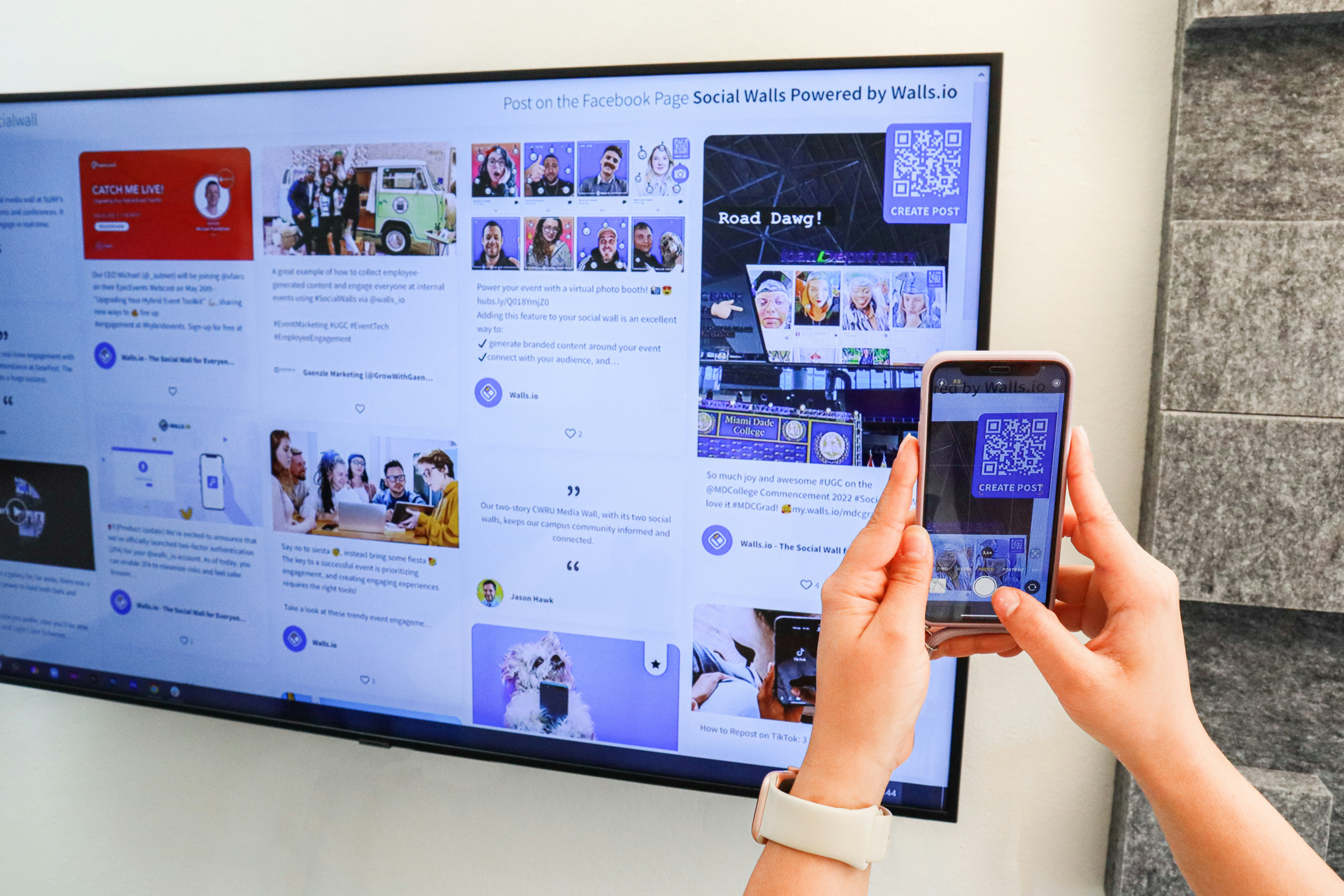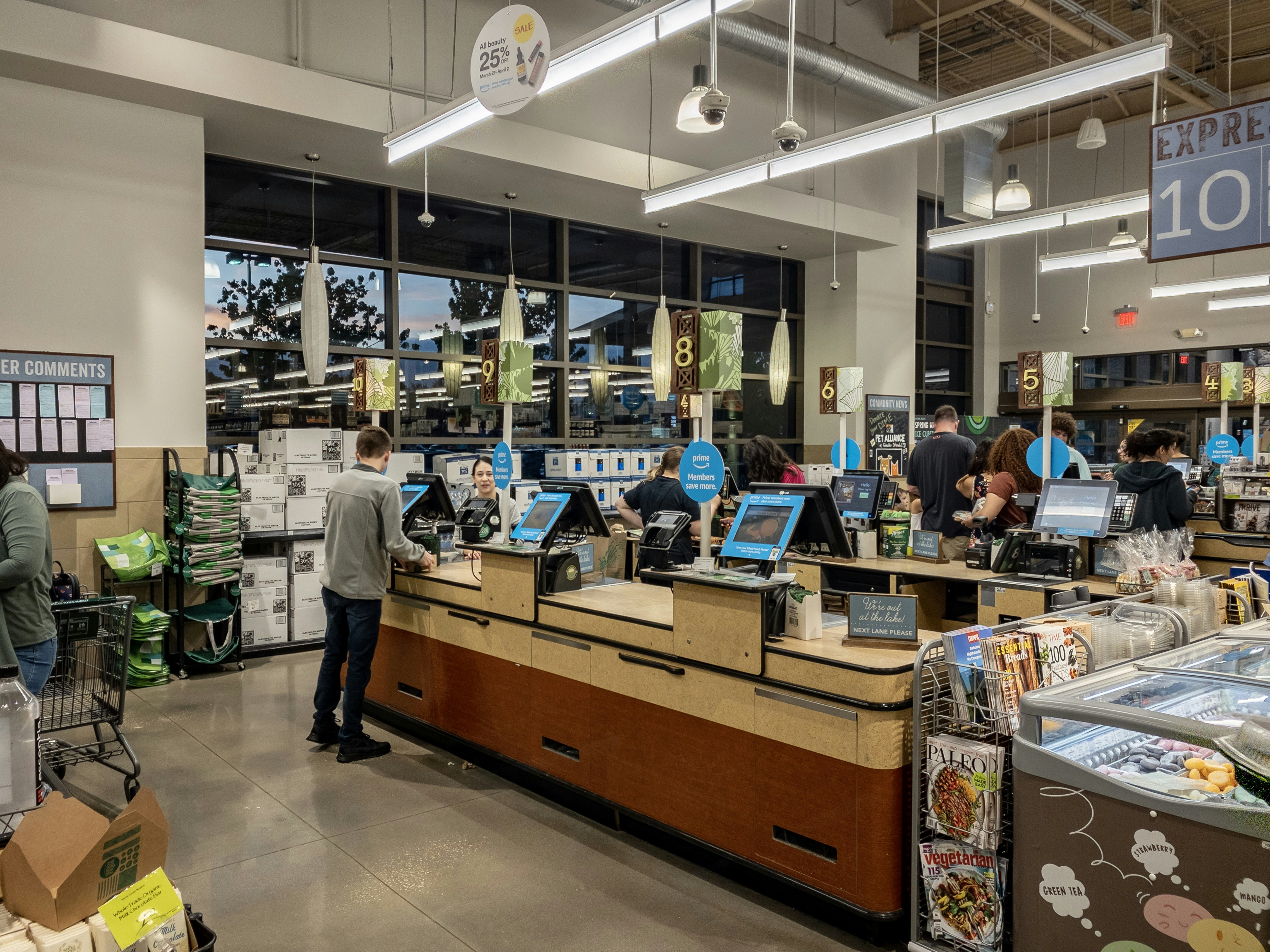Introduction to QR Codes
Quick Response (QR) codes are a type of matrix barcode that can store a vast amount of information, which can be easily scanned using a smartphone or QR code reader. Originally developed in 1994 by Denso Wave, a subsidiary of Toyota, QR codes were designed to improve the efficiency of tracking automotive parts during manufacturing. However, over the years, their utility has evolved and expanded significantly, leading to widespread adoption across various sectors including retail, marketing, and healthcare.
The functionality of a QR code is straightforward; it encodes information in a two-dimensional format that can be quickly scanned and interpreted by devices. Users simply point their device’s camera at the code, which then uses software to decode the information embedded within. This ease of use has significantly contributed to the rising popularity of QR codes, especially during the COVID-19 pandemic when touchless interactions became essential. Businesses began to leverage QR codes for menus, contactless payments, and promotional material, facilitating consumer engagement without physical contact.
In the context of tracking user behavior, QR codes have become increasingly significant. They offer a simple yet effective means of capturing data related to consumer interactions. By integrating QR codes into marketing materials or product packaging, companies can gather real-time analytics concerning user engagement, preferences, and behaviors. This data provides valuable insights that can inform marketing strategies and improve customer experiences. The capability to analyze user behavior through QR codes presents a powerful tool for businesses seeking to adapt in a rapidly changing market landscape. In the following sections, we will delve deeper into how QR codes play a crucial role in enhancing our understanding of user preferences and behaviors.
The Mechanics of QR Code Scanning
QR codes, or Quick Response codes, are two-dimensional barcodes that can store a variety of data, including URLs, contact information, and text. The technology behind QR code scanning is primarily based on image recognition and decoding algorithms, which are employed by QR code readers. These readers can be integrated into mobile devices such as smartphones and tablets, enabling users to quickly access the information encoded in a QR code.
Scanning a QR code typically involves opening a QR code reader application or using a built-in camera functionality on a smartphone. When a user points their device’s camera at a QR code, the QR code reader utilizes image processing techniques to recognize the code’s pattern. The reader captures the image and processes it through algorithms designed to identify the specific arrangement of black squares and white spaces that form the code. Once the code is scanned, the data embedded in it is decoded and presented to the user—often in the form of a clickable link or a text message.
The accessibility of QR codes on mobile devices has significantly increased their usage. Most modern smartphones come equipped with QR code scanning capabilities directly within their camera applications. This functionality does not require the installation of a separate app, simplifying the scanning process. Furthermore, QR codes can be utilized to track user interactions more efficiently. When a user scans a code, the interaction is logged, allowing businesses to gather vital information about customer preferences and behavior.
This data can be processed to gain insights such as the frequency of scans, location of users, and even the time of day when interactions occur. Consequently, businesses can tailor their marketing strategies based on the information derived from QR code scanning, thereby enhancing user engagement and interaction. By understanding the mechanics of QR code scanning, organizations can leverage this technology to better connect with their audience.
Benefits of Tracking User Behavior with QR Codes
In today’s digital landscape, tracking user behavior has become essential for businesses seeking to enhance their marketing efforts and optimize user experiences. One of the most effective tools for this purpose is the QR code. By integrating QR codes into various touchpoints, businesses can gain valuable insights into user interactions and preferences, leading to numerous advantages.
Firstly, QR codes facilitate real-time data collection, enabling businesses to gather immediate feedback about user behavior. When a user scans a QR code, an array of data is instantly recorded, including location, time, and interaction metrics. This immediate access to information allows for timely adjustments in strategies, ensuring that marketing efforts remain relevant and effective. Additionally, utilizing QR codes streamlines the data collection process, eliminating the need for manual entry and reducing potential errors.
Furthermore, QR codes significantly enhance user engagement. By providing users with interactive experiences, such as gamification or exclusive content accessed through a scan, businesses can foster a deeper connection with their audience. This increased engagement not only boosts brand affinity but also encourages repeat interactions, ultimately leading to higher conversion rates.
Moreover, tracking user behavior through QR codes empowers businesses to refine their marketing strategies. The insights gathered from user interactions can inform targeted advertising campaigns, allowing for a more personalized approach that caters to specific audience segments. This level of customization enhances the overall user experience, making customers feel valued and understood.
Incorporating QR codes into the user journey offers businesses a robust tool for tracking behavior, resulting in improved marketing strategies and user experiences. As the reliance on data-driven decisions grows, leveraging this technology can position a business favorably in an increasingly competitive market.
Implementing QR Codes in Marketing Strategies
In the ever-evolving landscape of digital marketing, QR codes have emerged as a potent tool for engaging consumers and tracking user behavior. By integrating QR codes into marketing strategies, businesses can provide seamless access to information, promotions, and services. This section explores effective ways to implement QR codes in marketing campaigns, illustrating best practices with real-world examples.
One exemplary case of QR code utilization is Coca-Cola’s “Share a Coke” campaign, which encouraged customers to find bottles personalized with their names. By incorporating QR codes on specially designed bottles and promotional materials, Coca-Cola drove engagement as users scanned codes leading to interactive experiences, social media challenges, and personalized messages. Such initiatives not only boost user interaction but also allow companies to gather valuable data on consumer preferences and behaviors.
To implement QR codes effectively, businesses should focus on creating visually appealing and easily scannable codes. It is essential to place codes strategically where they are likely to be seen, such as on product packaging, print advertisements, or digital marketing materials. Clear calls-to-action encourage users to engage; for instance, including phrases like “Scan to unlock a special offer” can significantly enhance interaction rates.
Additionally, providing a valuable incentive or content through scan actions can amplify engagement. Businesses may choose to offer access to exclusive deals, downloadable content, or entry into contests. To ensure successful implementation, tracking the performance of QR codes using analytics tools is crucial. This allows companies to refine their campaigns based on data-driven insights.
In conclusion, integrating QR codes into marketing strategies presents an opportunity for businesses to connect more deeply with consumers, fostering engagement and facilitating data collection that can inform future marketing initiatives.
Data Analytics and User Insights
Tracking user behavior via QR codes has become an essential strategy for businesses looking to leverage data analytics for deeper insights. The data collected through QR code scans provides valuable information that can help organizations understand their audience better and make informed decisions. Among the primary metrics collected are scan rates, demographics, geolocation data, and time spent per scan. Each of these elements plays a crucial role in analyzing user behavior.
Scan rates indicate the frequency at which users engage with QR codes, providing insight into the effectiveness of a marketing campaign or promotional material. A higher scan rate may suggest a more appealing call-to-action or better placement of the QR codes. Conversely, a low scan rate might prompt organizations to reassess their strategies to enhance user engagement.
Demographics captured through QR code scans, when analyzed, can reveal the age, gender, and interests of users, helping businesses tailor content and offers to their target audience. Understanding demographic data allows companies to segment their marketing efforts more effectively, ensuring that their messaging resonates with specific groups.
Geolocation data provides additional context, revealing where users are when they scan a QR code. This information can inform localized marketing strategies and help businesses determine the geographical hotspots of customer engagement. By analyzing user behavior based on location, organizations can strategize on how to optimize local outreach and service delivery.
Finally, analyzing the time spent per scan can shed light on user interest and engagement levels. Longer interaction times may indicate a deeper level of interest in the content accessed through the QR code, while shorter times might suggest a need for more compelling content. Together, these metrics create a comprehensive picture of user engagement, offering organizations actionable insights for improving their outreach strategies.
Privacy Considerations in Tracking Behavior
The advent of technology has opened up new avenues for marketers to track user behavior, with QR codes becoming a popular tool for gathering data. However, increasing concerns regarding user privacy necessitate a careful examination of the ethical implications associated with this practice. This section aims to clarify the regulatory frameworks, such as the General Data Protection Regulation (GDPR), which impose strict guidelines on data collection and user consent.
Under GDPR, companies operating within the European Union are mandated to adhere to principles that protect personal data. These include obtaining clear consent from users prior to tracking their behavior through QR codes and providing transparent information about the types of data being collected, its purpose, and how it will be used. Failing to comply with these regulations can result in substantial fines, not to mention a loss of trust among consumers.
To ethically track user behavior, organizations should establish best practices that prioritize user privacy. One approach involves incorporating clear and concise statements with each QR code, informing users that their behavior will be monitored. Additionally, businesses can include an option for users to opt-in or opt-out of data collection, ensuring that individuals feel empowered in their decision-making.
Moreover, anonymizing the data collected helps protect user identities, mitigating risks of personal exposure. It’s essential to limit the retention period of any personal data and to implement data security protocols that safeguard against unauthorized access. The integration of privacy-centric measures not only complies with legal requirements but also fosters a positive relationship between businesses and consumers, enhancing brand loyalty.
With the continuous evolution of technologies and regulations, businesses that actively prioritize user privacy while tracking behavior via QR codes will pave the way for responsible marketing practices. This commitment to ethical standards is vital for maintaining consumer trust in an age of heightened awareness regarding personal data privacy.
Case Studies: Successful Uses of QR Codes for Tracking Behavior
Over the past decade, various industries have effectively integrated QR codes to monitor user behavior and improve decision-making. One compelling example can be found in the retail sector, where a prominent clothing brand implemented QR codes on product tags. Shoppers were encouraged to scan the codes for accessing exclusive content, discounts, and styling tips. This initiative not only enhanced customer engagement but also allowed the brand to analyze scanning patterns, identify popular items, and optimize inventory management. The insights gained from this user behavior data led to a 15% increase in sales during the campaign period.
Another notable case study comes from the hospitality industry, specifically a restaurant chain that utilized QR codes for digital menus. Customers scanned codes at their tables to view and order food. This system enabled the chain to gather data on customer preferences, peak ordering times, and dish popularity. As a result, the restaurant was able to adjust its menu offerings based on real-time behavior insights, ultimately leading to a more tailored dining experience and a 20% increase in average order value.
In the healthcare sector, a medical clinic has successfully employed QR codes to streamline patient feedback. Patients are given QR codes to scan after their visit, leading them to a brief survey regarding their experience. The clinic’s management has been able to accumulate substantial feedback data, identifying trends in patient satisfaction and areas needing improvement. This innovative approach not only provides immediate insights into user behavior but also fosters a culture of responsiveness and adaptability, which patients increasingly value.
Across these examples, the common thread is a strategic focus on integrating QR codes into existing workflows, coupled with robust analytics mechanisms. These case studies illustrate best practices that other organizations can adopt, enabling them to harness the power of QR codes for superior tracking of user behavior. Leveraging such insights has proven essential for enhancing customer experiences and driving business success.
Future Trends in QR Code Technology and User Behavior Tracking
The landscape of QR code technology is continuously evolving, offering exciting prospects for businesses and marketers to enhance user behavior tracking. As we look toward the future, several trends are likely to shape this domain. First and foremost, advancements in QR code design will pave the way for more engaging and interactive experiences. Traditional black-and-white codes may evolve into visually appealing codes that blend with branding elements, improving aesthetics while retaining functionality. This integration adds a layer of user engagement, potentially driving increased interaction rates.
Another significant trend is the incorporation of augmented reality (AR) with QR codes. As AR technology becomes more accessible, we can expect QR codes to serve as gateways to immersive experiences. For instance, scanning a QR code could launch an AR application that provides interactive product demonstrations or virtual tours. This harmonization of QR codes and AR could revolutionize how businesses engage with consumers, offering not just data collection opportunities but also enhancing the overall user experience.
Furthermore, the evolution of analytics tools will play a crucial role in user behavior tracking when combined with QR codes. As businesses increasingly recognize the importance of data-driven decision-making, sophisticated analytics solutions will emerge. These tools will provide deeper insights into consumer interactions, allowing organizations to tailor their marketing strategies more effectively. With features such as real-time data monitoring, location-based analytics, and behavioral segmentation, businesses will be equipped to track and respond to user behavior more accurately than ever before.
In conclusion, the future of QR code technology promises a transformative impact on user behavior tracking. With innovative designs, AR integration, and advanced analytics, businesses can expect to deepen their understanding of consumer interactions while fostering more engaging experiences.
Conclusion: The Role of QR Codes in Modern Marketing Strategy
In recent years, QR codes have emerged as a pivotal tool in modern marketing strategies, reshaping the way businesses engage with their audience. The integration of QR codes facilitates seamless interaction between the physical and digital worlds, enabling marketers to capture user behavior in a remarkably efficient manner. By embedding QR codes in various advertising mediums, companies can gain valuable insights into customer preferences and engagement levels, thus allowing for data-driven decisions and refined marketing approaches.
The utility of QR codes extends beyond mere convenience; they act as a conduit for personalization and enhanced customer experiences. As consumers become increasingly tech-savvy, they expect quick access to information and content. QR codes fulfill this need by offering instant access to websites, promotions, or product details, all through a simple scan. This immediacy not only benefits the consumer but also aids businesses in tracking interaction patterns, which can be analyzed to optimize future marketing efforts.
As we have explored throughout this guide, the critical aspect of effectively implementing QR codes lies in understanding user behavior. Whether it’s through targeted marketing campaigns or loyalty programs, leveraging these codes can greatly enhance customer engagement and retention. Furthermore, staying updated with technological advancements and consumer trends ensures that businesses optimize their use of QR codes, keeping pace with evolving marketing landscapes.
In conclusion, incorporating QR codes into your marketing strategy is not merely a trend but a necessity for businesses aiming for growth in this digital age. By effectively utilizing QR codes for tracking user behavior and engagement, marketers can enhance their strategies, ultimately fostering stronger connections with their audience. As such, it is advisable for businesses to consider the integration of QR codes and remain attuned to their continuous evolution within the marketing domain.
© barcodly.com- All rights reserved





